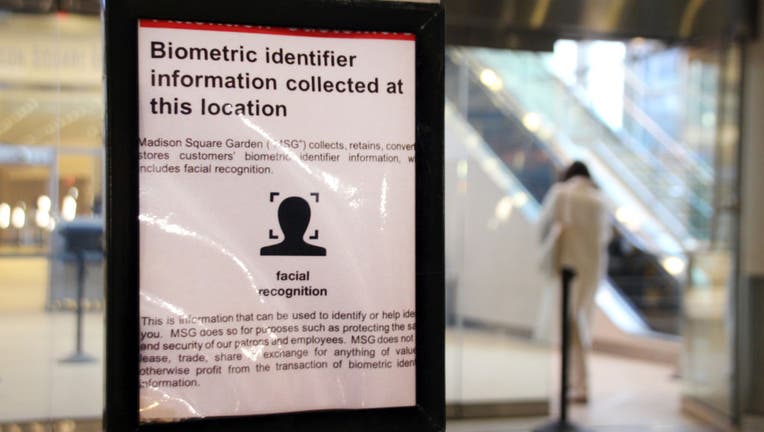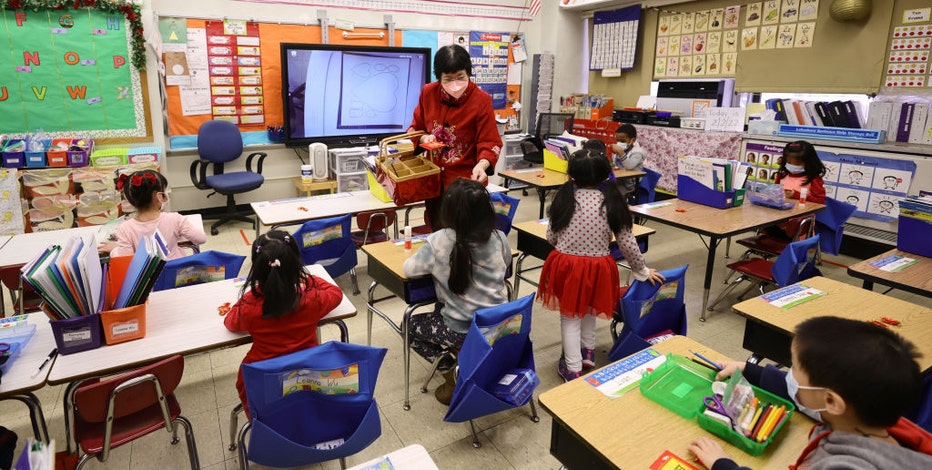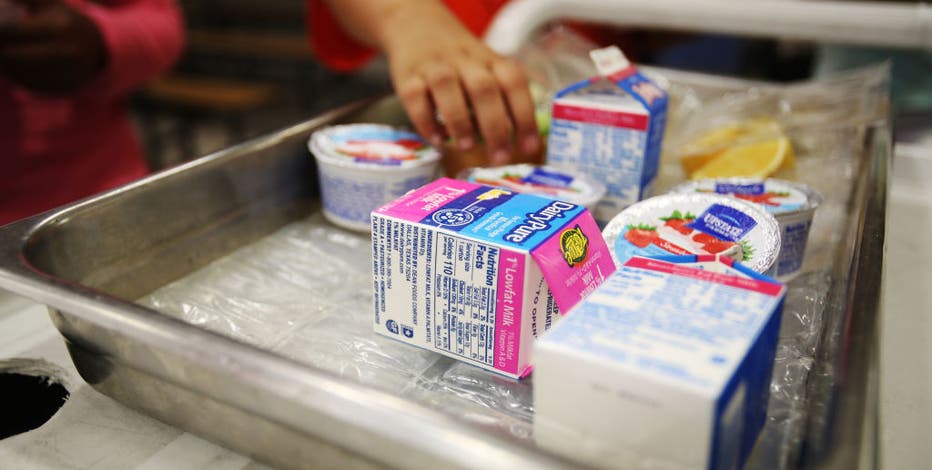NY bans facial recognition in schools

A sign refers to the use of facial recognition software at Madison Square Garden in New York. A dispute over facial recognition software at the entrance is making headlines. (Photo by Christina Horsten/picture alliance via Getty Images)
New York state banned the use of facial recognition technology in schools Wednesday, following a report that concluded the risks to student privacy and civil rights outweigh potential security benefits.
Education Commissioner Betty Rosa's order leaves decisions on digital fingerprinting and other biometric technology up to local districts.
The state has had a moratorium on facial recognition since parents filed a court challenge to its adoption by an upstate district.
The Lockport Central School District activated its system in January 2020 after meeting conditions set by state education officials at the time, including that no students be entered into the database of potential threats. The district stopped using the $1.4 million system later that year.
The western New York district was among the first in the country to incorporate the technology in the aftermath of deadly mass school shootings that have led administrators nationwide to adopt security measures ranging from bulletproof glass to armed guards. Lockport officials said the idea was to enable security officers to quickly respond to the appearance of disgruntled employees, sex offenders or certain weapons the system was programmed to detect.
But an analysis by the Office of Information Technology Services issued last month "acknowledges that the risks of the use of (facial recognition technology) in an educational setting may outweigh the benefits."
The report, sought by the Legislature, noted "the potentially higher rate of false positives for people of color, non-binary and transgender people, women, the elderly, and children."
It also cited research from the nonprofit Violence Project that found that 70% of school shooters from 1980 to 2019 were current students. The technology, the report said, "may only offer the appearance of safer schools."
Biotechnology would not stop a student from entering a school "unless an administrator or staff member first noticed that the student was in crisis, had made some sort of threat, or indicated in some other way that they could be a threat to school security," the report said.
The ban was praised by the New York Civil Liberties Union, which sued the state Education Department on behalf of two Lockport parents in 2020.
"Schools should be safe places to learn and grow, not spaces where they are constantly scanned and monitored, with their most sensitive information at risk," said Stefanie Coyle, deputy director of the NYCLU's Education Policy Center.
The state report found that the use of digital fingerprinting was less risky and could be beneficial for school lunch payments and accessing electronic tablets and other devices. Schools may use that technology after seeking parental input, Rosa said.



